Come and join us in the Lake District, the email said.
You’ll need a sense of humour and nerves of steel.
Now there’s a challenge. But the date was 31 October and, rather than teetering blindfolded from Broad Stand, the warmth of the Wasdale Head Inn, surrounded by some of the national park’s finest mountain scenery, beckoned.
The inn, which boasts it is the home of the world’s biggest liar, was also one of the favourite haunts of Chris Brasher, the man who helped Roger Bannister to the world’s first sub-four-minute mile, bagged his own Olympic gold medal and co-founded the London Marathon.
But Brasher also loved the mountains and his experience of uncomfortable walking boots led him to introduce his own brand of boot where comfort was king. The ethos lives on in the brasher brand, and its Hillmaster boot, which has sold more than any model in the UK, is 30 years old.
Time for a rejig.
A waft of diabolical smoke and the sound of spooks and ghouls filled the oak-filled confines of the inn as I walked in.
brasher chose Halloween to launch the Mark II version of the Hillmaster, the quintessential walking boot for the British walker and, to the accompaniment of pumpkin soup, Philippe Galland, a Frenchman in charge of developing this icon of UK hillwalking, explained the thinking behind the rebirth of the Hillmaster.
“When we thought about working on Hillmaster II, the next version of the Hillmaster, there was always a bit of worry. The first thing you will hear is: don’t touch it; it’s not broken,” he said.
“It’s already a very good product. Our intention was: how can we make it even better? That’s really the philosophy we tried to apply.”
The three areas the Sunderland-based company worked on were: comfort, fit and performance.
Mr Galland said: “We put in a lot of work testing it. Not just in the lab. The whole purpose was to work with consumers, with existing Hillmaster users, but also working with Ken Ledward’s team. Ken was one of the original brasher team that worked on the Hillmaster.
“We had a total of more than 20 consumers working with us, which is quite unusual. We put in, with these users, more than 200 hours of wear testing. We did more than 11 variations of the product. It was a very lengthy process.
“We believe we ended up with a product that was a lot better; Ken Ledward’s team believe that too and the testers – real consumers – concluded that, over Hillmaster I, it was a much better product.
“We ended up with 10 key points that actually improved the product. It’s not radically different from where we were. It’s an evolution; not a revolution. brasher is not about revolution. It’s about innovation in disguise, in a sense.
“We don’t want to alienate our existing users. Some of them are diehard fans; some are on their sixth or seventh pair right now.”
But the footwear manager was candid about another reason for the new version: “We also want to get some new users by modernising the product,” he said.
For comfort and fit, brasher worked on developing a completely different last – that dictates the internal volume of the boot and that basically follows the shape of the foot.
The Hillmaster II GTX last is gender-specific. Men’s feet are different from women’s.
He explained: “Women have smaller ankle bones than men; there’s a thinner bone structure in women’s feet and the arch support is different.”
For similar reasons, brasher socks are also gender-specific.
Pointing out the crucial locking hook Mr Galland said: “We also looked at, when you lace the boot, the position of the hook here is quite critical. On the Hillmaster I, the position was not absolutely correct. By modifying it, putting it a little higher, it actually pulls the heel into the correct position in the boot.
“We also use memory foam extensively, particularly round the tongue and round the collar line. It gives better recovery and cushioning.”
The foam also extends a little lower.
He is quite evangelistic about the new boot. “There’s a noticeable feeling of immediate comfort when you put your foot in,” he said, adding: “Everything is perforated as well, for breathability.”
brasher boasts of ‘comfort straight out of the box’ – the days of breaking in boots should be history it says, and the Frenchman explains the goal is extended ease of wear. “We’ve tried to deliver comfort, not just when you try on the boot, but throughout the day,” he said. “We talk about comfort all day long. Very often when you get back to the car, you just want to get out of your boots, but actually the big advantage with the Hillmaster II is that it’s really going to be comfortable all day.
For a climber, Mr Galland has a very broad knowledge of hillwalkers’ needs and the necessity for a pair of boots to do the job asked of them. “Performance was also critical to us. The Hillmaster I has leather lining. We decided to move to a fabric lining simply because the breathability is better.
“It may look a bit less premium, and it’s a bit of a tradition to have leather lining, but that’s broadly true in city shoes rather than walking boots. Fabric gives better grip of the socks and less movement of the foot within the boot, and better breathability.”
“One part that’s critical in terms of performance – it’s like a car – is the chassis. We spent a lot of time looking at the sole unit, trying to come up with a new design of the outsole, and rethinking the midsole element.
“The current Hillmaster has a rubber sole, EVA midsole and the rand so there are three parts. We’ve modified that, so we still have a rubber sole but we reduced the depth of the lugs. The current ones are very deep.”
It’s an interesting theory that, perhaps counter-intuitively, you get better grip by making the sole less aggressive.
“By reducing it by a couple of millimetres, we have actually increased its performance. It’s very important because if you look at weather like this [it’s pouring down outside, with strong winds], when it’s very greasy and muddy, if you don’t have a good grip going uphill and downhill, you’re going to have a problem.
“British conditions are British! On the continent it’s a lot more rocky. Instead of having oval lugs, we have more angular lugs which give you a lot more braking and more traction as well.
“There is no risk of clogging, from stones or mud, it will eject the stones and mud and you then have a flat sole so there is no risk of slipping.
“It certainly performs as well if not better; there’s less rubber so there’s more flexibility, and if you are carrying a big amount of rubber, it’s heavy.
“We’ve also moved away from EVA [ethylene vinyl acetate] and went for PU [polyurethane] to still give the maximum amount of cushioning but the interesting part is, instead of the rand being added at the end like a rubber band, is actually completely integrated.
“This gives less risk of delamination and breaking and it gives increased durability.
“There are also grooves that give the right level of flexibility so you’re not on a stiff platform and it also flexes at the right place. I’ve seen a lot of products that, when you bend it, flex in the middle. Ours flex at the right point.
“The other thing we worked on is the quality of the material and the quality of the leather. We’ve been working with a Portuguese tannery; we started working with them about a year ago.
“For us the leather is a very important part; it’s a one-piece material. We need to find the right balance of going through the wet-dry, wet-dry cycle.
“There’s always the risk of the material breaking around the flex points.
“We did an experiment where someone wore a pair of boots where one was treated and one wasn’t, with the equivalent of an average walker’s year’s wear.
“We got them to use them in challenging conditions with a lot of abrasion, screes and things like that.
“The leather is in pretty good condition, particularly the one that’s been treated. So there’s a lesson: take care of your product if you want it to last.”
His concern with quality of the boots, which will retail at £150 a pair, is comprehensive.
“You could put a cheap footbed in a boot,” Mr Galland said, “but I think it’s worthwhile we invest a bit of money, because it’s the first zone of impact.
“We’ve been talking to a lot of knee and foot specialists and something that came out is that we wanted to design a very simple footbed that does the job in terms of impact distribution and a good level of support around the arch of the foot.
“All the shock waves get distributed and this also works in collaboration with the midsole.
“There’s also a cradle here [at the heel] to create support and what you will see is that if you walk on a very hard surface you will feel the benefit and you will feel the absorption going through quite noticeably.”
After the theory: the practical. Cumbria was throwing its worst weather at us as we strode out in our Hillmaster II GTX’s in search of various Halloween brasher themed clues around Wasdale in the company of mountain expert John White.
It’s fair to say in the dark and confusion of the rain sodden dale many of us were a bit clueless, especially if we didn’t spot them in the beam of our headtorches, but the jaunt did take us to a graveyard and surreally, a tepee for a taste of malt whisky. Chris Brasher was a fan of the stuff you see.
The verdict: during the brief trog over stony, boggy, muddy, grassy and downright wet ground, the Hillmaster II GTXs held up well.
Dry feet, no discomfort, surefootedness. And no burning desire to tear the boots from my feet back at the inn.
We’ll give the boots a good try-out over an extended period, but first impressions are that the brasher quest for comfort, fit and performance is on track and the mark II could become every bit as central to British hillwalking as its predecessor.
The boot will be appearing in selected shops later this month and will be on sale generally next spring.
The brasher Hillmaster II
Suggested price: £150
Weight: 1482g per pair size 9
Uppers: full grain leather
Waterproof membrane: Gore-Tex
Colour: chocolate
Country of manufacture: China
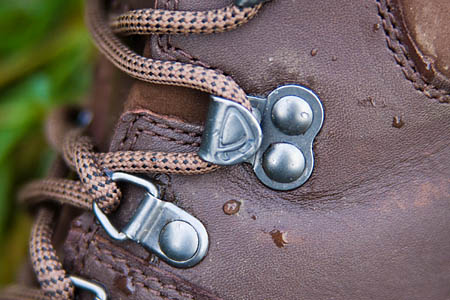

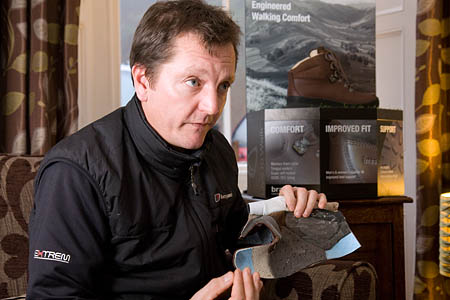
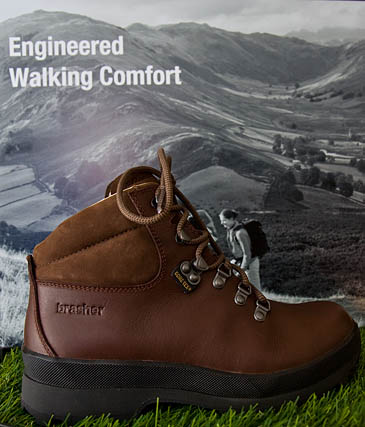
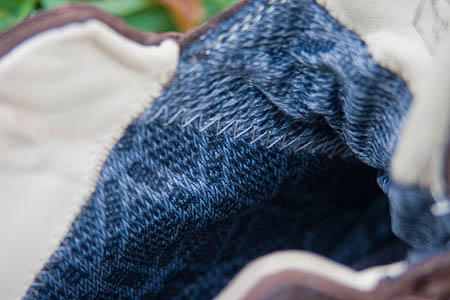
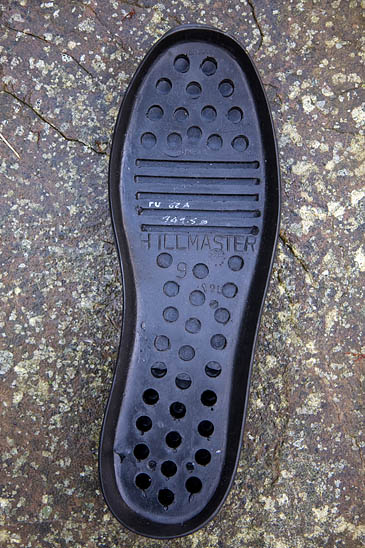
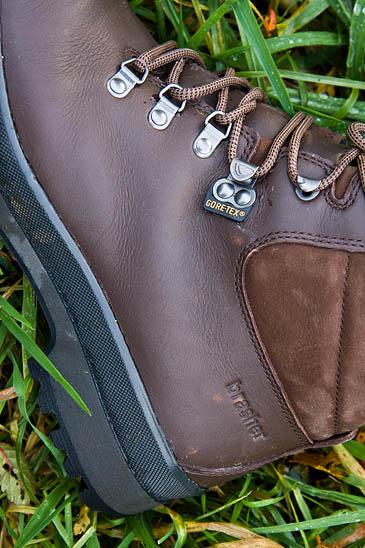
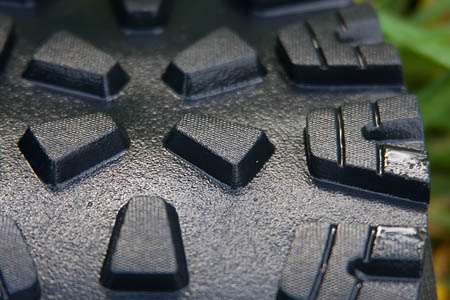
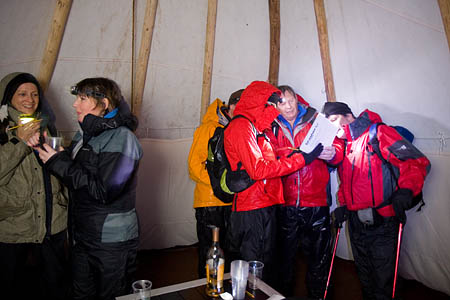
OutdoorsAndy
03 November 2012One question is, where are they made?
Brasher have long since stopped making their own boots, outsourcing to various factories. (The Brasher family sold the company long ago and its now owned by the Pentland group). They were getting the Hillmaster made in a factory in Portugal, which was producing excellent quality stuff, but this changed a few years back, outsourcing further a field to India and china, and the quality of their leather products suffered massively, including the Hillmaster.
Scarpa, for example, is still owned by the same family and has its own factories in Europe.
In a sense, like so many, its now just a brand name on a portfolio, as oppose to an independent company.
Its a shame one of our own boot companies has changed so much. Would be great to see a UK made boot. Seems however, that they are made increasingly further away, (with Brasher anyway).
I support UK product when I can and buy EU when I can't. I find the quality tends to be better and worth the little extra, (and you know the workers and enviromental protection will be better).
Go Seal Skinz, Bridgedale and Mountain King!! (to name a few).
The boot sounds very like an Anatom Q2, which is made in the EU from Italian leather! All comes down to fit, but I know which I would buy.
Bob
03 November 2012My omission, which I've rectified. They are made in southern China. Mr Galland said he works closely with a limited number of factories in the country.
Bob Smith
SuePR
06 November 2012Hi OutdoorsAndy
I handle the PR for brasher and have noticed your comments on various articles pertaining to brasher.
Your concerns have indeed been noted, however there are inaccuracies in your posts and brasher would like the opportunity to liaise with you directly, and provide further information and facts.
You can contact brasher directly via email at info@brasher.co.uk and relevant members of the team will be only too pleased to address your concerns.
Kindest Regards
Sue
OutdoorsAndy
09 November 2012Hi SuePR,
I'm very sorry if I have got anything wrong.
Please feel free to correct me on here and so we can put the record straight.
Kind regards,
OutdoorsAndy
Andrew Brown
12 November 2012I've have a few pairs of Brasher over the years and when the MKII version of the Hill Master was withdrawn I was a little perplexed as a new pair of boots was on the agenda. So I headed to my reliable outdoor shop only to hear that the Indian production run of the MKII's was so poor that the products were rejected by the retailer...sadly this doesn't say a great deal about the QC of the company nor the management. It seems that there isn't a passionate leader in Brasher anymore and the accountants are directing the development and production which always raises alarm bells with me. (they should maybe hire back some of the original family members...) From being the GM of a manufacturing company myself it seems that when companies don't know what to do, they head for China...I hear they are made in Southern China!!! Oh dear....Mmmmm... I think a pair of Altberg Fremingtons will be a much wiser investment.
Mike Thomspon
22 November 2012I totaly agree with Mr A. Brown regarding the place of manufacture.
Vertually all the products that I have been forced to buy which are manufactured in the far east are without doubt totaly inferior in quality, fit and longevity.
I have just replaced my 12 year old Hillmasters with a pair of Grisport Crusader boots, manufactured in Italy, and they are well made and comfy right off. I really do try to buy boots and equipment made in the European countries as I know through use and experience they are far superior to chinese/indian made equipment, and that is why I did not and probably will never buy a pair of Brashers ever again.
William
03 October 2013I'm not an experienced walker nor do I have much knowledge on boots and related equipment. I knew of Brasher and am very sad to learn of their current strategy.
In particular the response above of their PR person is baffling. Someone raises some points in a public forum and the response is to ask for it to be discussed privately? Weird. When Andy invites her to make her corrections in full view nothing more is heard.
Freeborn Dave.
23 November 2013Everything we buy these days is rubbish. One British brand manufacturer , whose factory is now in Taiwan, told me that he would like to build his cycles in Britain , but production costs would be too high. So would he rather produce rubbish? Would consumers like to buy rubbish? I’m fed up with buying rubbish. I have bought footwear, all of which has fallen apart after little use. Forget about getting ten years out of your boots. I have bought items of outdoor clothing by British brand manufacturers, whose factories are also in the far east, and these items have come apart at the seams.
I need a new pair of boots now, and so I wanted to find out where Brasher boots were made these days. I searched the web and found this page. Having discovered then that Brasher’s are made in china, I have decided to buy Scarpa’s or Meindl’s. There is something really sinister going on for Britain to be stripped of it’s manufacturing. There is a master plan behind it all to impoverish this country, but that is another story.
Norman Jones
24 August 2014I have had 2 pairs of fantastic Hillmasters over the past 25 years and I'm due a new pair. But I want leather inners, like the old ones not cloth. Can I still get them? If not I will have to sadly search other makes.
malcolm
05 January 2015fabric to stop your foot moving inside the boot... if the boot fits well, isn't that a good thing? that's why we have double lined socks... I feel the leather helps to prevent blisters.
Amanda
26 April 2015Very miffed upon research to hear that Brasher boots no longer a British product. For balance, I feel a woman's voice be heard here; I have bought 3 pairs of the softer leather version of boots over the last 30 years and all were fabulously comfortable without a single blister received over many a hill and Dale - no more it seems! I won't be buying any, sadly, if product and materials are not UK or EU sourced, where operational and ethical standards are vastly better.
I dont want a Matalan or Walmart pair of boots!
Charles
09 May 2015Had a pair of these for about 3 months - haven't put them through their paces yet and already the sole is pulling off.
Very disappointed - thought I was buying a quality boot with brasher. Would rather pay more for true quality. That said at £145 they weren't cheap anyway!
Lew Bobb
17 May 2015I agree with some sentiments expressed with regard to the poor quality of the new Brasher. An old pair of Brashers bought in the UK are/were excellent and so I decided to replace them. Alas the new product made in China are inferior to my originals. Indeed, Im never sure that while wearing the new boots in bush country whether or not they will let me down.. No more Brashers for me until the product is considerably improved.
Audrey
18 June 2016I have found the Hillmaster II size 8 to be shorter and narrower than the original Hillmaster I size 8 and I can no longer wear Bridgedale looped socks with these boots. Just completed my first walk in the new boots and my feet are crushed. For 31 years I have relied on Brashers. This is the end.
john pentith
27 May 2018IM still wearing a pair of Hillmaster boots made in Portugal, previous pair lasted 20 years ex army walker etc they dont have the same quality nowadays.